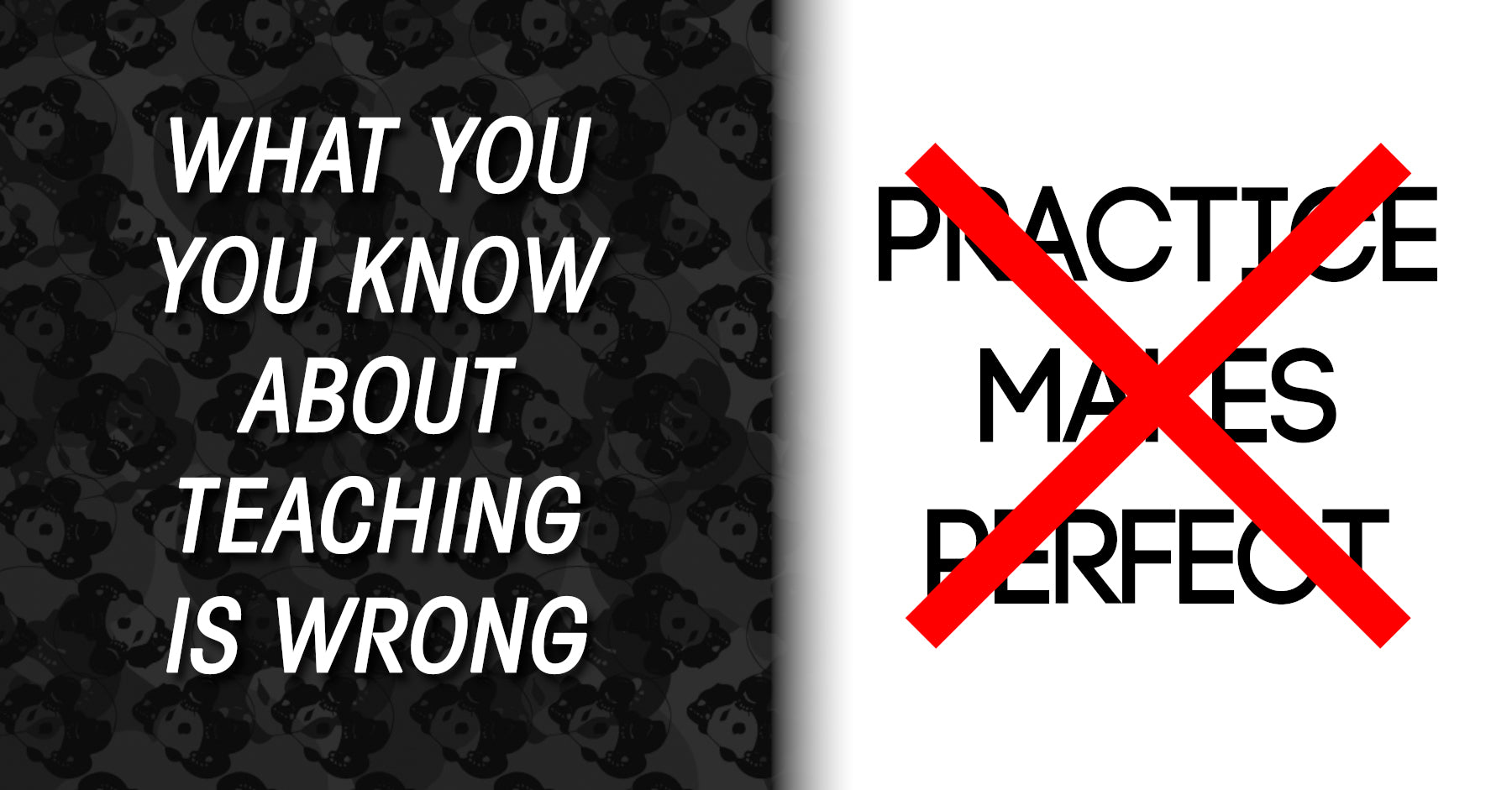
Challenging the Traditional Logic on Teaching
When I was first learning how to teach, certain “best practices” were common knowledge. These were the “right” ways to be a good teacher, run a good class, and design a good curriculum. You see these in the teaching guides in any field:
- A logical step-by-step progression is necessary for optimal learning
- Each technique and each class should logically follow the previous one
- Stick with a single topic or technique until you have it down perfectly
- Doing many deliberate, precise repetitions is the best way to get clean technique
- A good instructor explains everything in great depth and shows every detail
- Students have ideal learning styles such as visual, auditory, verbal, or kinesthetic
These are uncontroversial and “everyone knows” they are the right way to teach. The problem is that as you get into motor learning research, almost all of this “traditional wisdom” is wrong. How can that be? That’s a question I have been wrestling with for years, since it challenged so many of my beliefs and even my personal experiences.
Just because students enjoy a class and compliment your teaching does not mean they learned as much as they could. Positive feedback can be misleading because the best ways to train can be confusing or frustrating. This creates a conundrum where both the students and teachers will prefer worse methods because they give the short-term illusion of being good because everyone “feels” better about them.
As instructors, we feel good when our explanations give people those “a-ha!” movements and we appreciate positive feedback (especially since it pads our ego). We get everyone practicing moves until they look perfect, and the students will tell you they loved learning the little details that they never saw before. That’s what we believe a good class looks like.
The problem is that both the instructor and the students can “feel good” about teaching methods that that the research shows are not that good as measured by real learning (i.e. acquiring the ability to use the skills outside a classroom setting, not just look good during practice or pass tests).
Running a commercial school where you need to convince people to sign up and keep paying you, you need to make your customers happy, and this usually means ensuring they leave feeling happy that they came to class. Many students will complain (at least to themselves) if they feel the class is not well-taught or too unstructured.
What does motor learning research tell us to do instead?
- Drills should be more random or game-like so they involve timing and judgment
- Rote repetition (practicing the same move again and again) should quickly give way to varied and random practice (doing a variety of moves at random)
- You can mistake improved practice with improved learning, i.e. being able to perfectly perform the techniques in drilling, but having no experience against resisting opponents
- Switching between several topics or skills will make students compare and contrast them (thereby developing judgment), even if no clear connection between them exists
- A sense of frustration and difficulty fuels true learning, but students will often complain about random practice being too chaotic or unstructured if they don’t understand why they are doing it
- Start with the simplest explanation and get the students into drilling and games, adding details only as necessary, but giving students the chance to discover the details for themselves
- Just because a student says they prefer a certain “learning style” does not mean it’s the best one for acquiring a skill, and people can improve their ability to learn through styles they say they don’t like
These alternatives to the traditional logic can take a while to get your head around, since they run contrary to the “established wisdom”. For help incorporating these alternative training methods into your classes, I recommend these articles:
- Accelerate Your Learning by Turning Drills into Games, my guide to adding more random practice to your classes
- Applying the Science of Motor Learning to Your BJJ Practice, Jason C. Brown’s excellent chalkboard explanation of motor learning for BJJ
- Drilling with Chaos, Marshal D. Carper’s very good exploration of the topic of motor learning
For more general advice on teaching, check out my big piece How to Teach for Maximum Knowledge Retention and Marshal’s simply named (but very good) Tips for Teaching Jiu-Jitsu.
Other articles:
Quick links
Contact us
About us
Quality BJJ gear at fair prices, available all year. Founded in 2012 to provide an alternative to high-cost, limited edition gis. Dive into the BJJ lifestyle with us—join the Panda Nation!"
